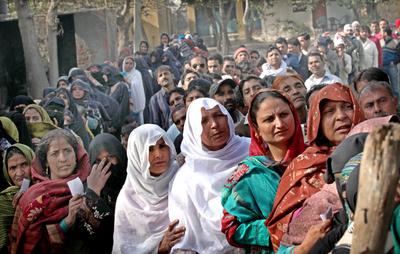Money and power are partly to blame for this disconnect, as is the first-past-the-post electoral system. This is evident at the local level where India’s democracy tends to degenerate into ethnocracies that disenfranchise smaller groups.
An early response to the voter-politician disconnect was the landmark 1992 constitutional amendment, which sought to strengthen local democracy by formally introducing a third elected tier of government empowered to manage local affairs. But this historic innovation quickly proved ineffectual, not least because it applies a one-size-fits-all institutional design in fostering local democracy.
Consider, for instance, the length of tenure, which reconciles two conflicting considerations: avoiding instability due to frequent elections, and connecting people and their representatives by giving the former reasonably frequent opportunities to appraise the latter. Irrespective of the tier of government, currently directly elected representatives in India hold office for a fixed term of five years. This is undesirable in the case of local bodies because the imbalance between the average turn-around time for projects and the duration of tenure, coupled with the first-past-the-post system, is breeding inefficiency and unaccountability.
The union government deals with issues like national defence, foreign trade, international relations, monetary policy and taxation. Related policies have long gestation periods and so elected representatives need a longer tenure to get results. But a relatively frequent change of guard would not be as disruptive at the local level because local bodies, except those of the largest metropolitan centres, are charged with implementing and monitoring social welfare schemes, and building and maintaining local public infrastructure, which do not involve very large investments or complex technical sophistication. These are short-term activities that generally require less than a year — certainly less than five years — for completion.
More frequent elections to local government could improve both performance and accountability by giving elected representatives more incentive to perform throughout their tenure and not just in its final years. While more frequent elections might de-motivate elected representatives and cause election fatigue among voters, long tenures for unaccountable candidates instil a sense of political indignation, powerlessness and apathy among voters. It also bears noting that shorter tenure could be a substitute for the highly contentious right to recall.
The feasibility of shorter tenures will depend critically on the costs of frequent elections, but these are surmountable. The costs can be reduced by redesigning the election process to shorten the electoral process, because in local elections candidates have to campaign in smaller constituencies. Moreover, greater use of information and communication technologies and the use of electoral rolls prepared for state elections would reduce the cost of local elections. Over time, frequent local elections will also inevitably lead to rationalisation and improvements in the cost efficiency of the process.
The substantial gain from more frequent local elections would be an improved political atmosphere.
As the benefit to a candidate from winning decreases, the temptation to resort to money and muscle power to ensure success is likely to diminish. This in turn will make candidates less likely to seek the support of political parties and business interests, which always come at a cost.
Drawbacks of the first-past-the-post system, which include perverse incentives to appease only a critical mass of the electorate at the cost of overall welfare, can be counterbalanced to some extent by shorter tenures. This in turn is likely to lessen ethnic polarisation.
Cheaper elections are also likely to attract more candidates. Even if one’s preferred candidate is unlikely to win, the possibility of voting for a candidate close to one’s preferences will improve participation rates.
In short, redesigning local bodies so that elected officials have shorter tenures would go a long way to improving the quality of grassroots democracy in India. On the one hand, it will ensure effective representation and greater accountability. On the other, it will reduce partisan polarisation of the electorate and the importance of money in local elections. The proposed innovation will, however, draw objections from those demanding substantive devolution of power to local bodies because it has the potential to perpetuate the subservient status of local bodies. But the provision of most public goods cannot be entrusted to bodies with sub-district level jurisdiction. And in any case, local bodies cannot seek greater devolution of powers until they are more effective and accountable. Shorter tenures will go a long way to achieving this.
Vikas Kumar is Assistant Professor at Azim Premji University, Bangalore.
Alok Tiwari is District Magistrate of Mathura.
Ragupathy Venkatachalam is a doctoral candidate at the School in Social Sciences, University of Trento, Italy.

